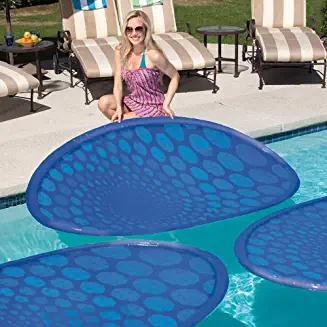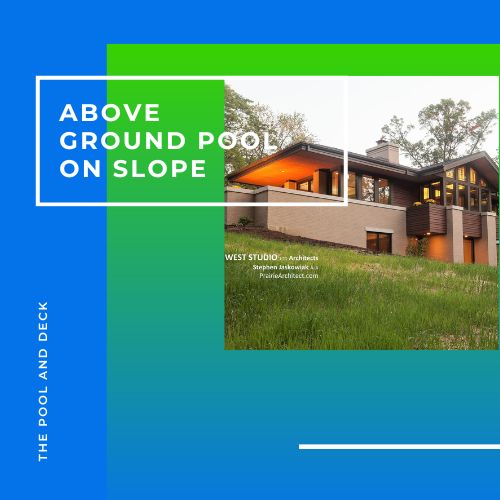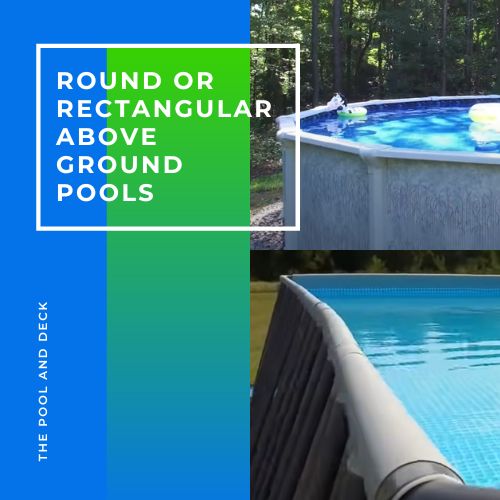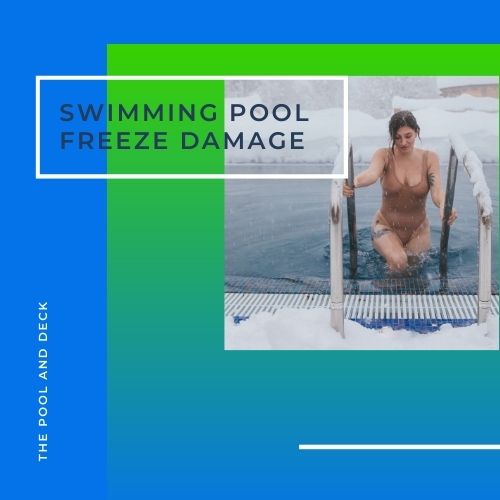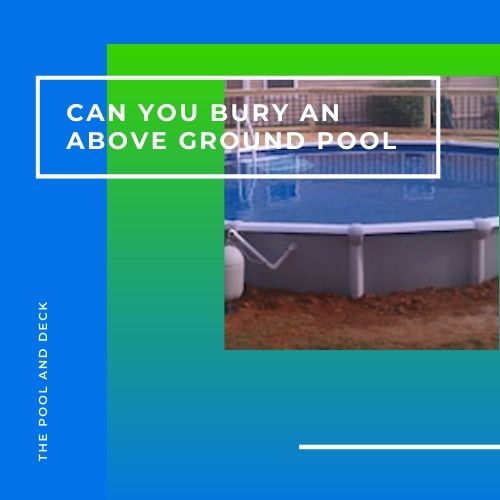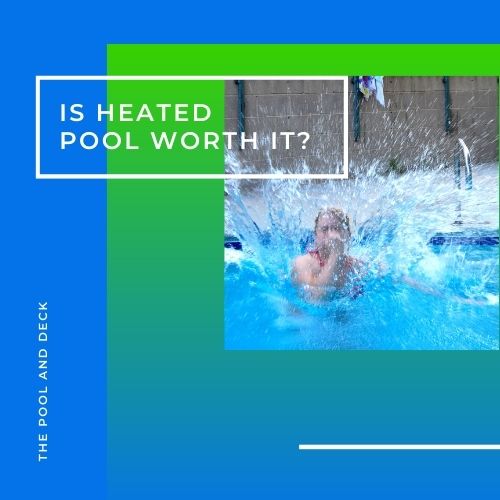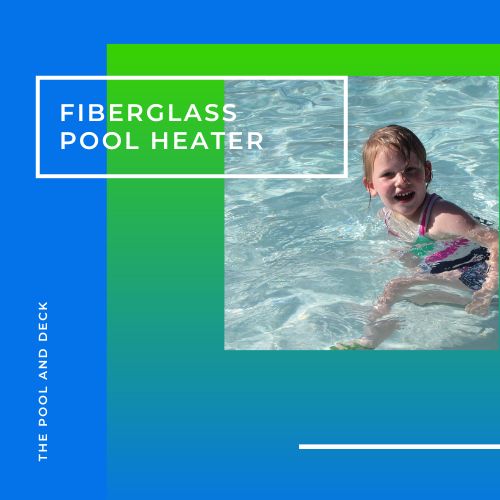Can Vinyl Pools Be Heated? (Ways to Keep It Warm, Yet Save Money)
As an Amazon Associate, I earn from qualifying purchases.
Table of Contents
Can Vinyl Pools Be Heated?
There are quite a few reasons for choosing to install an inground vinyl liner pool. Lowest upfront cost & shortest install time gives it an edge over fiberglass and concrete inground pools. No wonder inground vinyl liner pools are quite popular with first time pool owners. But can vinyl pools be heated?
Vinyl liner pools heated using gas or electric heaters will run up a huge energy bill. The reason is the vinyl liner and the galvanized steel pool walls are too thin to offer any decent thermal insulation.
Most of the heat that you put in your vinyl pool will be lost, very quickly, to the surrounding ground.
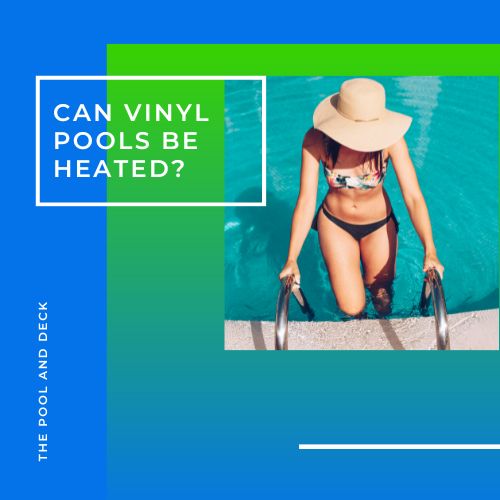
All inground pools lose heat in two ways:
Surface Evaporation
For the same size pool, the surface area will be the same for all the three types of inground pools. As such, vinyl, fiberglass and concrete pools will lose equal quantities of heat due to water evaporation from the surface.
Through Pool Walls & Floor
Inground pools also lose heat to the surrounding ground by conduction through the pool walls and the pool floor. The thermal conductivity and the thickness of the wall and the floor material will determine the rate of heat loss.
This is where the three types of pools differ.
What Is Thermal Conductivity?
Thermal Conductivity is defined as
“the quantity of heat transmitted through a unit thickness of a material – in a direction normal to a surface of unit area – due to a unit temperature gradient under steady state conditions”
The Engineering ToolBox
A good thermal conductor such as electrolytic copper has a thermal conductivity of 225 [Btu/(hr ft °F)] while one with very poor thermal conductivity such as a cork board has only 0.0248 [Btu/(hr ft °F)].
In scientific terminology Thermal Conductivity is denoted by the letter K.
How Do You Calculate Heat Loss of Water?
The formula used to calculate the heat loss through a pool wall (or floor) through conduction is as under:
Q=(K×A×ΔT)/L
Where
- Q is the heat lost per hour (BTU/hr)
- K is the thermal conductivity (BTU/(hr ft °F))
- L is the thickness of the pool wall (ft)
- A is the area of the pool wall (sq ft)
- ΔT is the temperature difference between pool water & ground ( °F)
Based on the above formula, the heat loss rate (Q) from 100 sq ft of pool wall and a 1°F temperature difference (ΔT), for typical pools is in Table below:
| Type | Thickness L (inches) | Thickness L(feet) | Thermal Conductivity (K) (BTU/hr ft °F) | Heat Loss / hr Q=(K×A×ΔT)/L (BTU/hr) |
| Vinyl Liner (PVC) | 1/32” (30 mil) | 0.0026 | 0.11 | 4,230 |
| Steel Panel | 5/64”(14 gauge) | 0.0065 | 8.32 | 128,000 |
| Vinyl Liner Pool Wall Total | 7/64” | 132,300 | ||
| Fiberglass | ⅜” – 3/16” | 0.0313 – 0.0156 | 0.0231 | 74 – 148 |
| Concrete | 4”-6” | 0.3333 – 0.5000 | 0.578 – 1.04 | 115 – 312 |
So it is pretty obvious that your attempt to heat up your inground vinyl pool using a gas or electric heater is going to cost you tons of money on energy bills.
A fiberglass pool has the lowest heat loss rate. So using a Fiberglass Pool Heater makes perfect sense.
The heat loss from a concrete pool is somewhat higher than that from a fiberglass pool. So heating a concrete pool will cost you more than heating a fiberglass pool but still within affordable limits.
How to Heat a Vinyl Pool?
You can heat a vinyl pool by using:
- Electric Resistance Heaters
- Electric Heat Pumps
- Propane Pool Heaters
- Natural Gas Pool Heaters
- Solar Pool Heaters
Each has their pros & cons.
Electric Resistance Heater Pros: Low upfront cost, compact, quiet
Electric Resistance Heater Cons: Low heating capacity, high operating cost
Electric Heat Pump Pros: Durability, high efficiency, low operating cost
Electric Heat Pump Cons: High upfront cost, not effective below 50° F
Propane Heater Pros: Moderate upfront cost, heats real fast
Propane Heater Cons: Highest energy cost, high maintenance
Natural Gas Heater Pros: Moderate upfront cost, heats real fast
Natural Gas Heater Cons: Pretty high energy cost, high maintenance
Solar Heater Pros: Free heating, low maintenance
Solar Heater Cons: Upfront cost can be high for some hi-tech models
To get vinyl pools heated, a solar pool heater is your best bet. There are models which will not break the bank and the heating is virtually free!
The caveat is that the sun should be out most of the time. You won’t be able to heat up your pool on demand. But a solar pool heater will keep vinyl pools heated & warm enough for a comfortable swim, most of the time!
How Can I Heat My Pool for Free?
If you want to heat your pool for free, forget electric or gas powered pool heaters. They have many advantages, “free” is not one of them.
To heat your pool for free, just use the following five words:
HARNESS SOLAR ENERGY. PREVENT EVAPORATION.
That’s all you need to do.
Harnessing Solar Energy
There are several designs available. From the highly sophisticated (and expensive) to ludicrously simple (and cheap). Take your pick from the list below:
Solar Panel Pool Heater
Using solar panels to heat your pool water has a high upfront cost. However, it makes up for it by possibly being the most effective and efficient way of using the power of the sun.
Mount the panels on any sloping roof as the porch or the garage. The cold pool water is pumped through the solar cells where it gets heated up. The warm water comes back to the pool through the return line.
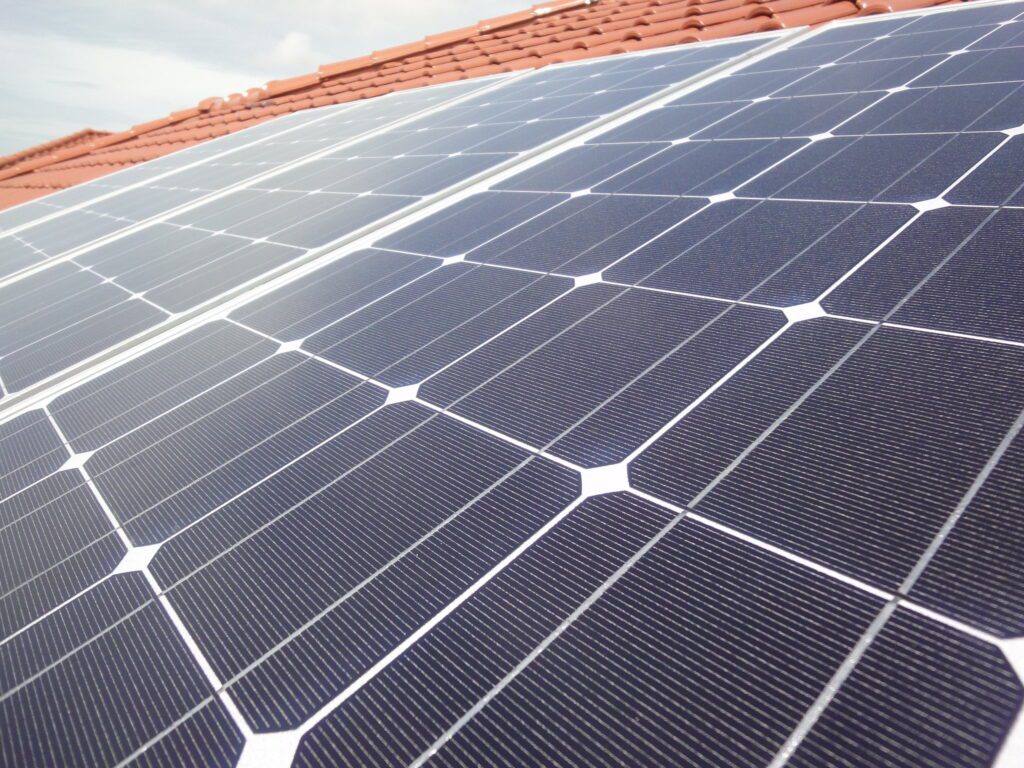
A solar panel pool heater will cost you between $3000-$4000. After that it’s all free
Solar Pool Cover
A solar pool cover, in principle, is just a huge bubble wrap. A thin transparent plastic sheet sheet with thousands of air pockets forms the solar pool cover.Use of a solar pool cover works not only to harness the energy from the sun, but also prevents water evaporation from.
Each of the air pockets in the solar pool cover function both as micro magnifying glasses and thermal insulators. The “bubbles” concentrate the sun’s rays onto the pool water, heating it up.
The pool cover is impermeable so it prevents evaporation.

24′ Round 12 Mil Clear Solar Pool Cover – $164.99
from: Pool Splash, LLC
Use the pool cover on the vinyl liner pool at all times you are not using the pool for swimming. For best results, leave the pool cover on till mid afternoon and then enjoy a comfortable swim in the warmed up water in the evening.
It is estimated that proper and regular use of solar pool cover can help raise the temperature by as much as 12° F.
Solar Sun Rings
Solar sun rings are basically the same as a solar pool cover. For the sake of convenience the solar sun rings are shaped into 5’ circular disks that can be floated on the pool surface.
Solar Sun Rings are easy to place or remove, one by one. You may even leave some of the solar rings floating in one section while you use the other section.
Black Garden Hose
This is a simple hack based on a well-known scientific fact. Black color absorbs almost all of the sunlight. The light gets converted to heat.
All you need to do is get some black garden hose, say 100’ – 150’ and connect it between the pool filter and the return jets. Lay out the black garden hose on the patio or in the backyard, making sure it gets the maximum amount of sunlight during the day.
The hose heats up the cool pool water that runs through it. So there you have it! A very simple & easy way to make a solar pool heater.
Solar Heater Mat
The Solar Heater Mat just expands on the principle of the black garden hose. The solar heater mat consists of a series of black vinyl mats with tubes running through it. The solar heater mats are laid out flat on any surface such as a lawn, a roof or a patio, close to the pool.
The pool water from the filter enters from one end and exits from the other. The exit of the solar mat is connected to the return line.
Solar Dome
The Solar Dome extends the same idea in a different format. It is more compact and pleasing to the eye. In principle it does the same work as the black garden hose or the solar heater mat.
Liquid Solar Pool Cover
A Solar Pool Cover can also be in liquid form. Liquid Pool Covers, cover the pool surface with a non-toxic, alcohol based liquid. This thin layer is completely safe for swimmers and saves energy by trapping heat & reducing evaporation. They are super convenient and cheaper too!
Check out TROPICAL FISH LIQUIDHEAT SOLAR BLANKET. Unlike a conventional pool blanket which has to be removed before swimming can begin, LiquidHeat breaks apart whenever the water is disturbed but when the water becomes calm, LiquidHeat regroups to reform the protective layer.
Prevent Evaporation
The rate of evaporation from a swimming pool is determined by the surface area of the pool, the ambient temperature & humidity and the wind speed. Reduce the wind speed and you will reduce water evaporation.
Build a Windbreak
You can significantly reduce the rate of evaporation from a vinyl liner pool by building artificial or natural windbreakers.
Strategically added windbreaks can help keep your vinyl liner pool warm.
Adding a solid or a semi solid fence around the pool, will not only reduce the wind speed over the water, it will also provide some privacy.
Alternatively you can use natural or artificial shrubs or trees. They add beauty to the landscape, while reducing air flow over the pool surface.
Thank you very much for reading the post. I do hope you found it informative and helpful.

